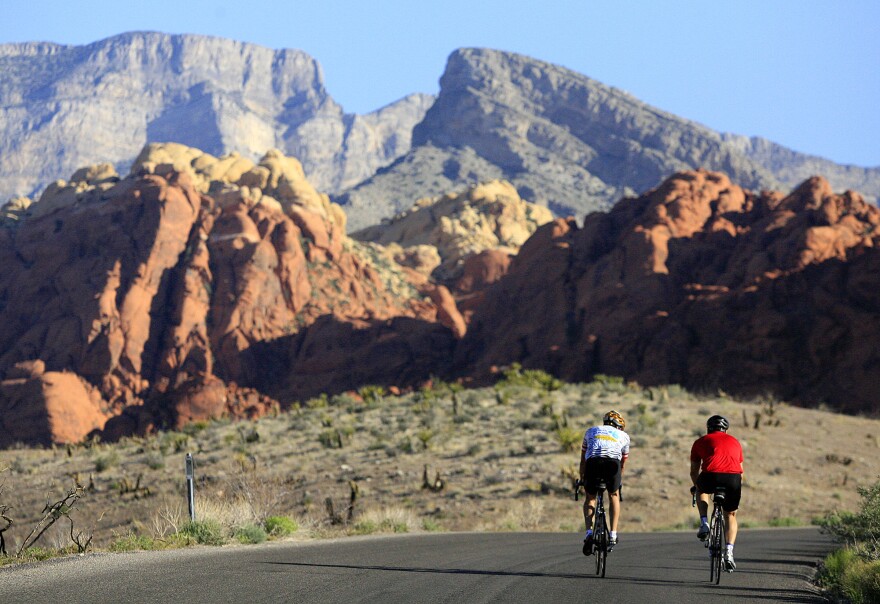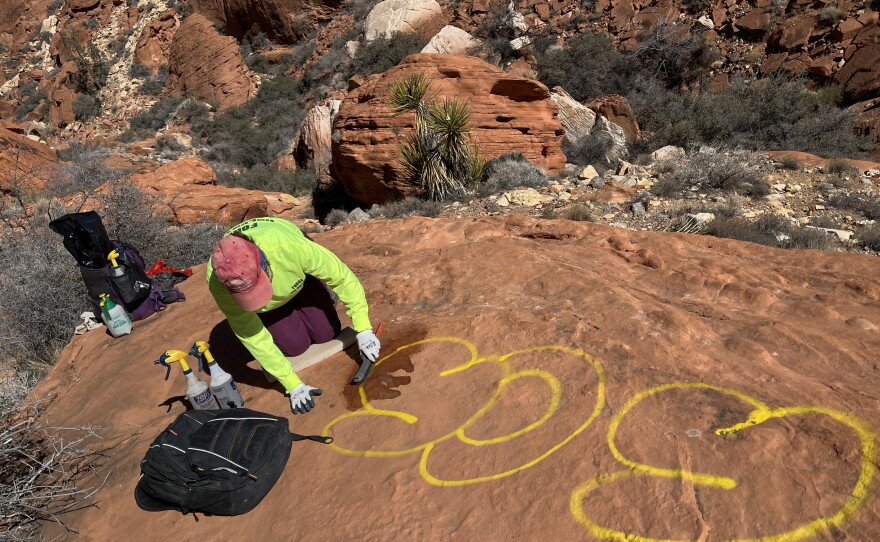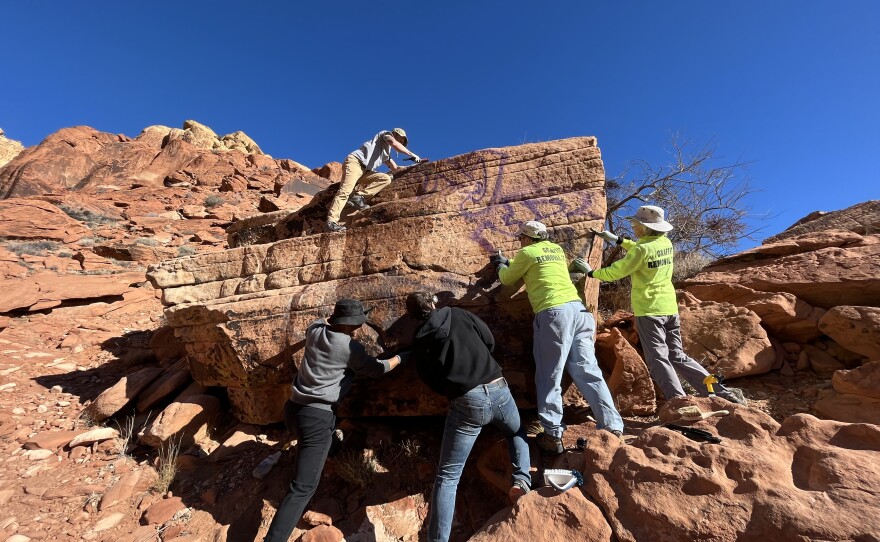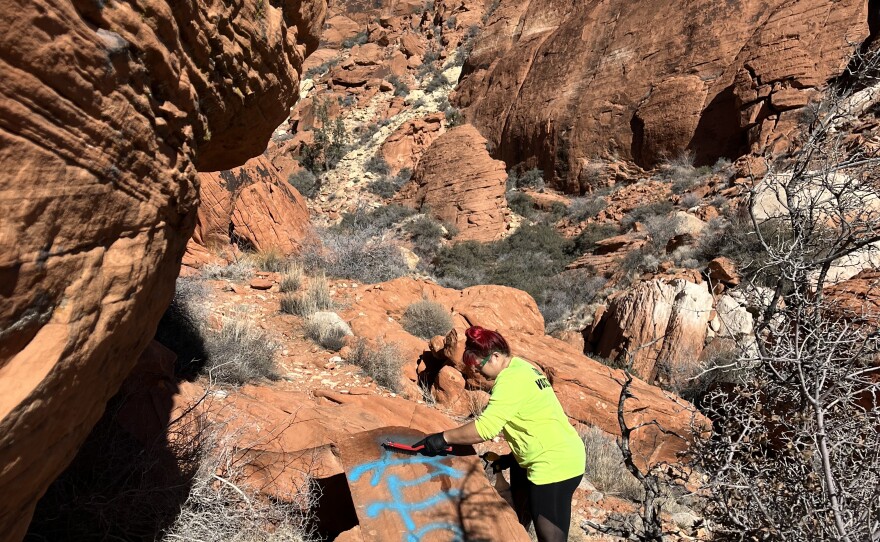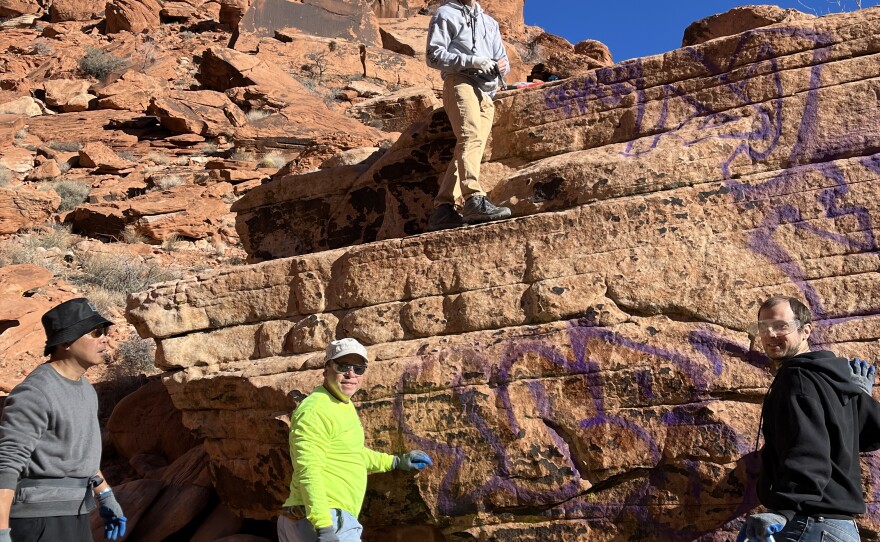Nevada's natural areas are being overrun. That’s been great for the state’s tourism industry, but not so good for the environment.
These are some of the numbers: Red Rock Canyon drew about 20,000 visitors when it opened 41 years ago. Last year, it drew 2 million; and in 2022, those numbers nearly doubled to 3.8 million. About a million people each year to go Mount Charleston. We all know Lake Mead’s water level is falling — even so, it still attracted 5.6 million people last year.
All that humanity is starting to deface the very thing that drew those people in the first place.
At the 2022 Mount Charleston Spring Cleaning event, for instance, volunteers collected 204 bags of litter equal to 4,000 pounds of trash … in one day. Ancient rock writings, some believed to be more than 10,000 years old, were found graffitied last year.
Becca and Luke McGraw are educators in the Subaru/Leave No Trace Traveling Team. They were in Las Vegas March 27 through April 1, leading a conservation project at Red Rock Canyon. They talked to us from the road in St. George, Utah.
"The point of the spotlight program is to go to these areas that are just on the cusp of being loved to death. And so the goal of Leave No Trace is that we really want everyone to get outside and enjoy these beautiful places, but currently the situation is that … when the use increases, we usually see the outdoor impacts increase," Luke McGraw said.
He pointed to trash on trails, dog poop bags, trampled vegetation and overrun facilities as a few examples.
"Ideally, we'll work with the public and once they know the effect that their actions have, people will be more likely to practice Leave No Trace and pick up that trash, pick up that dog poo. Just be a good visitor," he said.
Also with State of Nevada host Joe Schoenmann on Monday morning was Terri Janison of Friends of Red Rock and Sierra Freeman of Women Who Explore Las Vegas.
Janison said their group, which has about 350 volunteers, have seen a "phenomenal" increase of graffiti in Red Rock Canyon.
"I'm trying to figure out why they do that, what makes you want to paint these rocks that are this millions of years old? It's just really interesting and frustrating," she said.
Friends of Red Rock partners with the Bureau of Land Management, and they don't recommend going out alone to clean up graffiti.
"We work very, very closely with the park rangers out there, and we take the guidance from them. So we will help recruit the volunteers, then all the training for whatever needs to be done out there for the the indigenous plants and for the native plants and the graffiti removal," Janison said.
Becca and Luke McGraw said to avoid confrontation on the trails if you see someone littering, but go above and beyond to keep the area clean.
"We really want people to do as much as they're able, and as much as they're comfortable doing," Becca McGraw said. "There are lots of ways that we can influence human behavior. So sometimes you do have law enforcement, tickets, fines, things like that. Engineering can also be really effective. Like where you place a trash can help someone decide if they're going to throw their trash away, or if they're just going to chuck it on the side of the trail."
"We always try to go out with our own trash bags, obviously to take our own trash, but picking up as we see it go," said Freeman, who leads group hikes in the area. "We do talk a lot too, about being aware of the food you're bringing out and the packaging that it's in. Even if you're trying to be not leave trash on the ground, the less packaging you have, less chances to drop something."
Dave Campbell of the Southern Nevada Climbers Coalition also chimed in, trying to bring awareness to rock climbing on wet sandstone.
"If you go out there on a Saturday, or any given day, now you're seeing tons and tons of people and rain or shine, they still are here, and they're gonna climb," he said. "And that's pretty hard. Because a lot of people like, Hey, I'd like to go do that. But I live here. And I'm gonna step back and go find something else to do. But it's hard to engage in those conversations, because some people might not be from, you know, they're visiting out of state or out of country, and they just, they're not going to have the same respect for the space."
Guests: Terri Janison, executive director, Friends of Red Rock; Becca and Luke McGraw, partners and members of the Subaru/Leave No Trace Traveling Team; Sierra Freeman, ambassador, Women Who Explore Las Vegas



